There were lots of signs on the road to Pettigo. Caution. Hidden dips. Blind summits. They seemed apt in an area bordering on Brexit. What economic humps and hollows could that huge event bring for a village that straddles two jurisdictions? What political worries might appear over the crests of hills in the future, like the buffalo heads of articulated trucks that I was seeing, if the UK crashes out of the EU on this month. Could solace be taken from the half-formed rainbow spotted en route?
Brexit is preoccupying the people of Pettigo – not difficult to understand given that the border splits the village in two. Pettigo is in the Republic of Ireland and Tullyhummon – or ‘high street’, the other half of the village on the far side of the Termon river – is in Northern Ireland.
Many readers will know Pettigo as the gateway village to the pilgrimage at Lough Derg. Pettigo’s name comes from the Latin word protectio, meaning protection. Termon, the name of the river that the border runs through, gets its name from the Irish word tearman, meaning sanctuary.
I met community development officer Natasha McGrath in the impressive €4.5m Termon Centre on the Pettigo side of the river. Natasha has been interviewed many times in recent months by journalists from as far away as the US.
“Everyone is interested because of our situation,” she says. “Brexit puts the border front and centre. It is a worrying time. We had no say in the vote, yet we’re going to be so affected if a hard border is brought back.”
No one I talked to that day wants to return to those difficult days of customs checks and tension.
“We’ve come too far to go back,” they say.
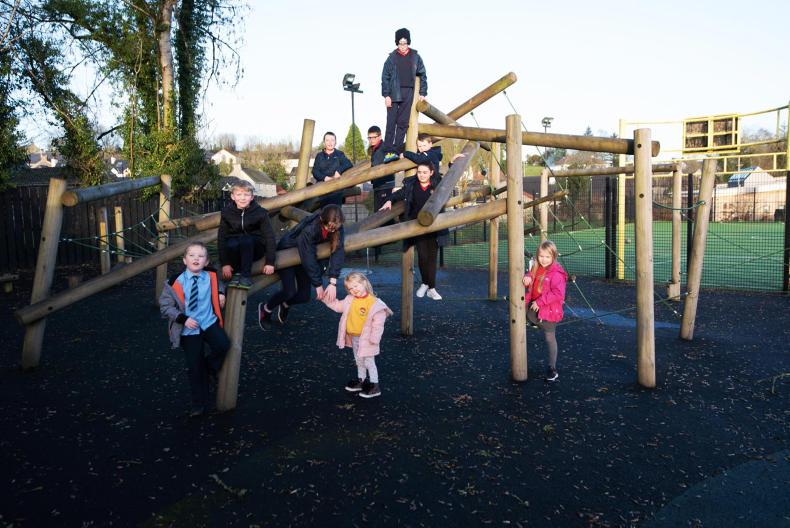
The Little Smarties Playgroup in Pettigo. \ Clive Wasson
“If we’re going to have someone in that wee green hut by the bridge again it’s going to be a complete and utter nightmare,” musician and farmer, Paul Kelly, says. He remembers the torment of four border crossings between the village and the place where he lives.
Kathleen Johnson is a suckler farmer living on the Fermanagh side and is in the Termon Centre for lunch. She didn’t vote in the Brexit referendum because she didn’t know how to vote.
“I didn’t really understand it all, to be honest. We’ll have to wait and see, but you’d be worried about cattle prices as well as customs.”
William Hamilton is a farmer and musician who also lives on the Fermanagh side and is on the board of ADOPT – the Association for the Development of Pettigo and Tullyhummon – set up after peace came.
He voted for Brexit because of the immigration issue, he says, because he saw a vast amount of money going out of the UK to the EU and because he was fed up of EU farming red tape.
“Your farm is not really your own at present,” he says.
Borders – hard or soft – weren’t an issue during the referendum, he acknowledges.
“It wasn’t mentioned at the very start, but it’s very worrying now the way things are going.”
Sitting beside him is the chairperson of ADOPT, Martin Eves, a recycling specialist who trades internationally and knows the convenience of a common currency, says Brexit was ill-conceived and would be potentially damaging to the UK and NI economies.
“We don’t want people pushed back into corners either,” he says. “A hard border would be a barrier to mixing and could create a fearful environment again.”
ADOPT was set up with International Fund for Ireland money and the Termon Centre built with funding from the Peace III initiative. It opened in May 2014 with support from Donegal County Council and Fermanagh District Council, and is perceived by them all as a neutral venue that has been hugely important in forging good community relations.
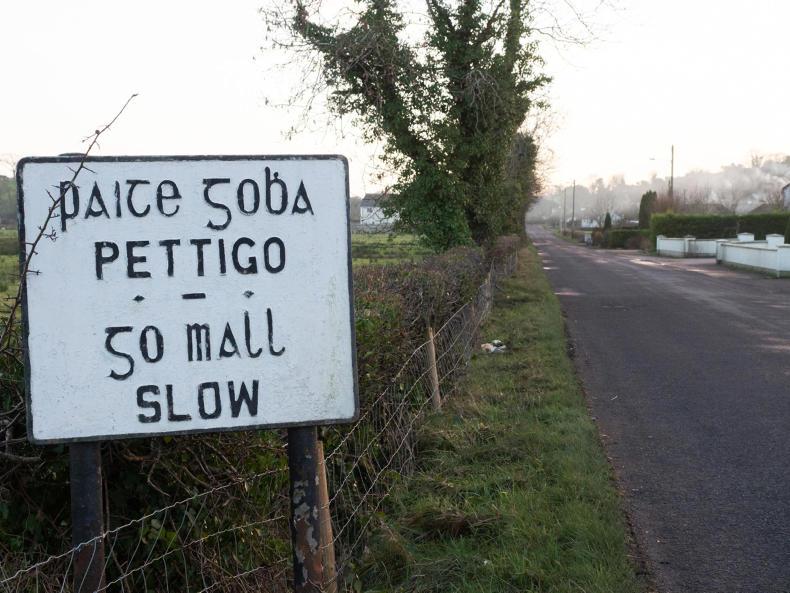
It has a café, gym and sports hall that doubles as a theatre. Young people drop in there on Friday evenings, there are yoga, zumba and pilates classes, not to mention badminton and curling. A myriad of meetings are also held there and the school uses the main hall at times too. The cross-community Little Smarties playschool is across the yard.
“It was this being a neutral venue for everyone that made the difference,” Martin Eves says.
Another €4.3m was spent on providing what constitutes the rest of the Termon Complex – a youth hub in the Methodist hall, Tullyhummon and a riverside park, a footbridge and loop walk to link the two sides of the village.
Now no one is sure what will happen.
“Eighty percent of our gym membership comes from Fermanagh,” Natasha says. “Will people bother coming if there are customs checks on the bridge? The gym is a big part of our weekly income. What will happen to the centre if it isn’t used as much? A drop in membership would threaten viability.”
It is obvious there is concern about jobs.
“Everyone is worried. You don’t know what the future holds,” she says.
The centre is run with the help of Pobal posts and staff are constantly working to come up with new fundraising ideas.
She points to all the community reconciliation work that has happened.

Linda Dunlop, William Hamilton, Natasha McGrath, Martin Eves, Maureen Boyle and Paul Kelly. \ Clive Wasson
“Our community has come on in leaps and bounds through genuine cross-border, cross-community work, like a shared playschool and senior citizen outings that have forged friendships,” she says. “It would be so detrimental for Brexit to jeopardize any of that good work. We want this place to go on being welcoming for everyone. Years ago you reared your young people to go away because you were afraid of them getting involved (politically). There are 20-year-olds here now who haven’t a notion how bad things were and we never want them to know.”
Pettigo has four churches, two shops, a post office and four pubs, along with several other businesses. It also has a primary school, but traditionally those on the Tullyhummon side go to primary school in Kesh and then on to secondary school in Enniskillen. Those in Pettigo go to Ballyshannon.
“I didn’t know my neighbours growing up,” Paul Kelly, who has released a song about Brexit, says.
“You’re getting kids to mix here from two years of age. If we ever want to have proper peace it needs to start with the kids getting to know each other.”

Martin Eves, Natasha McGrath, William Hamilton, Linda Dunlop, Paul Kelly and Maureen Boyle. \ Clive Wasson
On the tour of the centre, Natasha, the manager, shows me the Revenue letter that has arrived, entitled Helping you to Manage Brexit.
Her eyes go upwards…
Maureen Boyle is secretary of Lough Derg Pilgrimage Centre, five miles down the road. With major plans to have Lough Derg included in the major Hidden Heartlands Pilgrim Way initiative, she doesn’t want to see a return to bollards on the bridge.
“You’re talking international, spiritual tourism that will bring a lot more people to our area. We don’t want that jeopardised. We’re blessed with the Termon Centre and it benefits a lot from the pilgrimages.”
After coffee in the diner that takes euro and sterling, and after the photographer has sent a drone up to get a bird’s eye view of the bisected village that army helicopters once scanned with floodlights, I called in at the post office where James Gallagher is postmaster. A nearby 1922 statue in the Diamond recalls a troubled past.
He has seen a huge influx of Northern Irish people applying for Irish passports.
“There’s been a seven-fold increase,” he says, along with reiterating that the centre has been a focal centre for people of all persuasions and that the lack of customs has meant ease of access for everyone.
I leave what seems like a village holding its breath and hoping that old borders and old wounds won’t be re-opened. And that there will be fully formed rainbows on the horizon very soon.
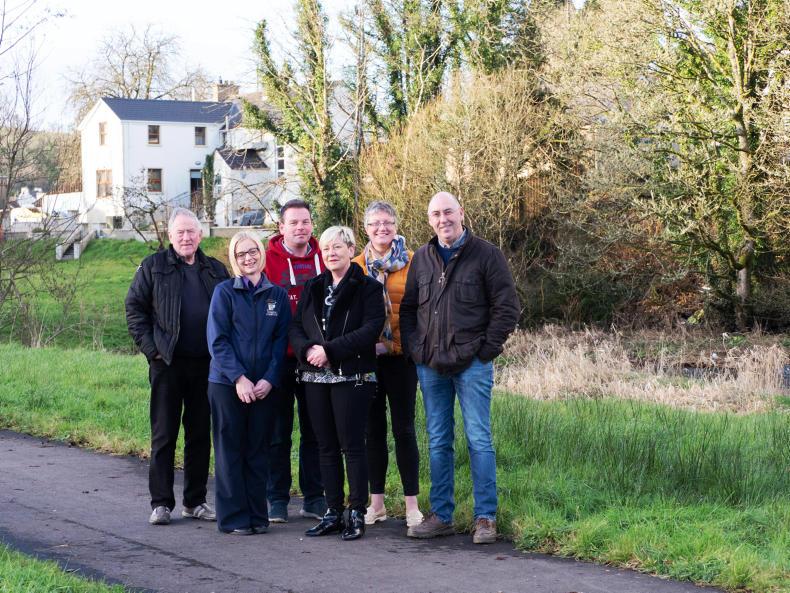
Linda Dunlop, William Hamilton, Paul Kelly, Maureen Boyle, Martin Eves, and Natasha McGrath. \ Clive Wasson
Read more
It takes a village: community 'buy-in' in Bunnanaddan
"You need something to bring people together"
There were lots of signs on the road to Pettigo. Caution. Hidden dips. Blind summits. They seemed apt in an area bordering on Brexit. What economic humps and hollows could that huge event bring for a village that straddles two jurisdictions? What political worries might appear over the crests of hills in the future, like the buffalo heads of articulated trucks that I was seeing, if the UK crashes out of the EU on this month. Could solace be taken from the half-formed rainbow spotted en route?
Brexit is preoccupying the people of Pettigo – not difficult to understand given that the border splits the village in two. Pettigo is in the Republic of Ireland and Tullyhummon – or ‘high street’, the other half of the village on the far side of the Termon river – is in Northern Ireland.
Many readers will know Pettigo as the gateway village to the pilgrimage at Lough Derg. Pettigo’s name comes from the Latin word protectio, meaning protection. Termon, the name of the river that the border runs through, gets its name from the Irish word tearman, meaning sanctuary.
I met community development officer Natasha McGrath in the impressive €4.5m Termon Centre on the Pettigo side of the river. Natasha has been interviewed many times in recent months by journalists from as far away as the US.
“Everyone is interested because of our situation,” she says. “Brexit puts the border front and centre. It is a worrying time. We had no say in the vote, yet we’re going to be so affected if a hard border is brought back.”
No one I talked to that day wants to return to those difficult days of customs checks and tension.
“We’ve come too far to go back,” they say.

The Little Smarties Playgroup in Pettigo. \ Clive Wasson
“If we’re going to have someone in that wee green hut by the bridge again it’s going to be a complete and utter nightmare,” musician and farmer, Paul Kelly, says. He remembers the torment of four border crossings between the village and the place where he lives.
Kathleen Johnson is a suckler farmer living on the Fermanagh side and is in the Termon Centre for lunch. She didn’t vote in the Brexit referendum because she didn’t know how to vote.
“I didn’t really understand it all, to be honest. We’ll have to wait and see, but you’d be worried about cattle prices as well as customs.”
William Hamilton is a farmer and musician who also lives on the Fermanagh side and is on the board of ADOPT – the Association for the Development of Pettigo and Tullyhummon – set up after peace came.
He voted for Brexit because of the immigration issue, he says, because he saw a vast amount of money going out of the UK to the EU and because he was fed up of EU farming red tape.
“Your farm is not really your own at present,” he says.
Borders – hard or soft – weren’t an issue during the referendum, he acknowledges.
“It wasn’t mentioned at the very start, but it’s very worrying now the way things are going.”
Sitting beside him is the chairperson of ADOPT, Martin Eves, a recycling specialist who trades internationally and knows the convenience of a common currency, says Brexit was ill-conceived and would be potentially damaging to the UK and NI economies.
“We don’t want people pushed back into corners either,” he says. “A hard border would be a barrier to mixing and could create a fearful environment again.”
ADOPT was set up with International Fund for Ireland money and the Termon Centre built with funding from the Peace III initiative. It opened in May 2014 with support from Donegal County Council and Fermanagh District Council, and is perceived by them all as a neutral venue that has been hugely important in forging good community relations.

It has a café, gym and sports hall that doubles as a theatre. Young people drop in there on Friday evenings, there are yoga, zumba and pilates classes, not to mention badminton and curling. A myriad of meetings are also held there and the school uses the main hall at times too. The cross-community Little Smarties playschool is across the yard.
“It was this being a neutral venue for everyone that made the difference,” Martin Eves says.
Another €4.3m was spent on providing what constitutes the rest of the Termon Complex – a youth hub in the Methodist hall, Tullyhummon and a riverside park, a footbridge and loop walk to link the two sides of the village.
Now no one is sure what will happen.
“Eighty percent of our gym membership comes from Fermanagh,” Natasha says. “Will people bother coming if there are customs checks on the bridge? The gym is a big part of our weekly income. What will happen to the centre if it isn’t used as much? A drop in membership would threaten viability.”
It is obvious there is concern about jobs.
“Everyone is worried. You don’t know what the future holds,” she says.
The centre is run with the help of Pobal posts and staff are constantly working to come up with new fundraising ideas.
She points to all the community reconciliation work that has happened.

Linda Dunlop, William Hamilton, Natasha McGrath, Martin Eves, Maureen Boyle and Paul Kelly. \ Clive Wasson
“Our community has come on in leaps and bounds through genuine cross-border, cross-community work, like a shared playschool and senior citizen outings that have forged friendships,” she says. “It would be so detrimental for Brexit to jeopardize any of that good work. We want this place to go on being welcoming for everyone. Years ago you reared your young people to go away because you were afraid of them getting involved (politically). There are 20-year-olds here now who haven’t a notion how bad things were and we never want them to know.”
Pettigo has four churches, two shops, a post office and four pubs, along with several other businesses. It also has a primary school, but traditionally those on the Tullyhummon side go to primary school in Kesh and then on to secondary school in Enniskillen. Those in Pettigo go to Ballyshannon.
“I didn’t know my neighbours growing up,” Paul Kelly, who has released a song about Brexit, says.
“You’re getting kids to mix here from two years of age. If we ever want to have proper peace it needs to start with the kids getting to know each other.”

Martin Eves, Natasha McGrath, William Hamilton, Linda Dunlop, Paul Kelly and Maureen Boyle. \ Clive Wasson
On the tour of the centre, Natasha, the manager, shows me the Revenue letter that has arrived, entitled Helping you to Manage Brexit.
Her eyes go upwards…
Maureen Boyle is secretary of Lough Derg Pilgrimage Centre, five miles down the road. With major plans to have Lough Derg included in the major Hidden Heartlands Pilgrim Way initiative, she doesn’t want to see a return to bollards on the bridge.
“You’re talking international, spiritual tourism that will bring a lot more people to our area. We don’t want that jeopardised. We’re blessed with the Termon Centre and it benefits a lot from the pilgrimages.”
After coffee in the diner that takes euro and sterling, and after the photographer has sent a drone up to get a bird’s eye view of the bisected village that army helicopters once scanned with floodlights, I called in at the post office where James Gallagher is postmaster. A nearby 1922 statue in the Diamond recalls a troubled past.
He has seen a huge influx of Northern Irish people applying for Irish passports.
“There’s been a seven-fold increase,” he says, along with reiterating that the centre has been a focal centre for people of all persuasions and that the lack of customs has meant ease of access for everyone.
I leave what seems like a village holding its breath and hoping that old borders and old wounds won’t be re-opened. And that there will be fully formed rainbows on the horizon very soon.

Linda Dunlop, William Hamilton, Paul Kelly, Maureen Boyle, Martin Eves, and Natasha McGrath. \ Clive Wasson
Read more
It takes a village: community 'buy-in' in Bunnanaddan
"You need something to bring people together"









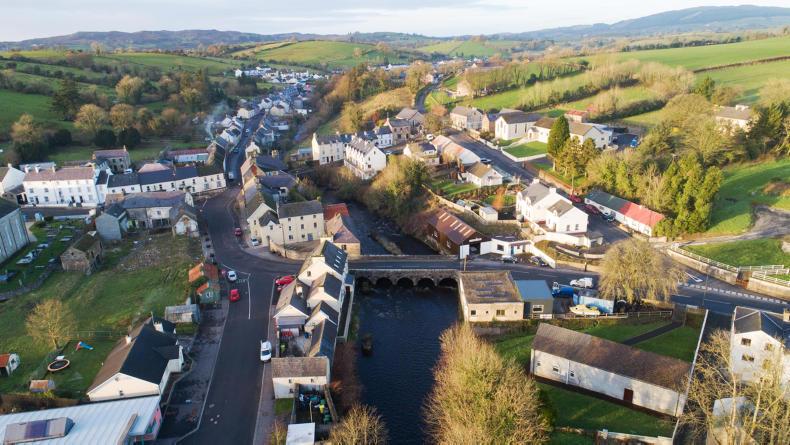

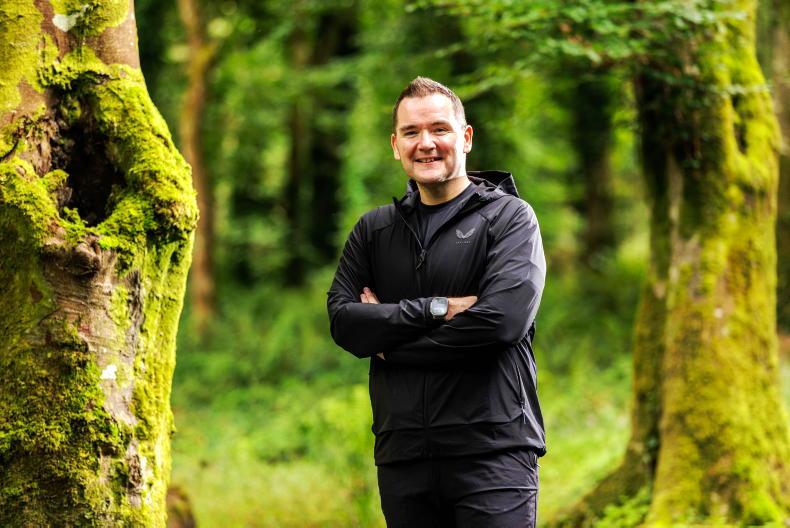
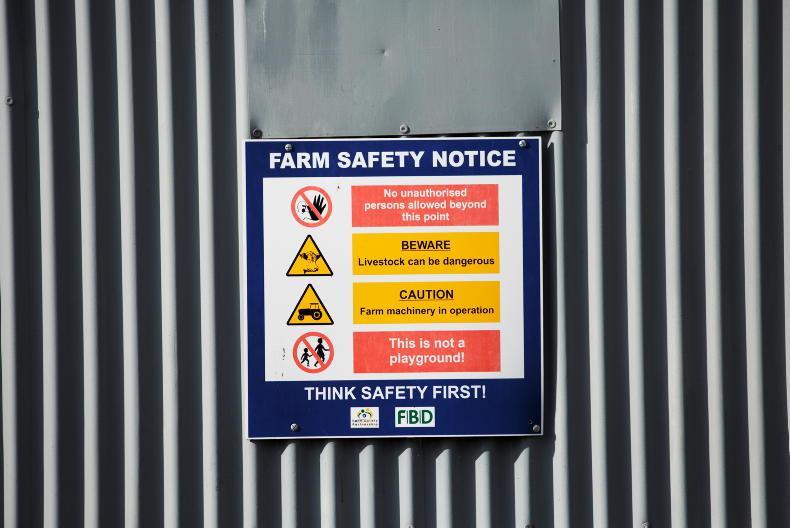
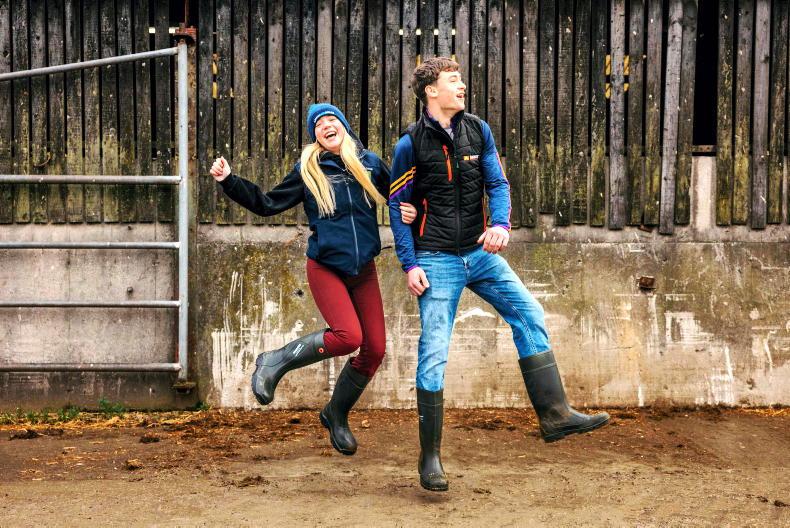
SHARING OPTIONS